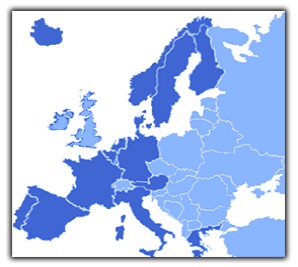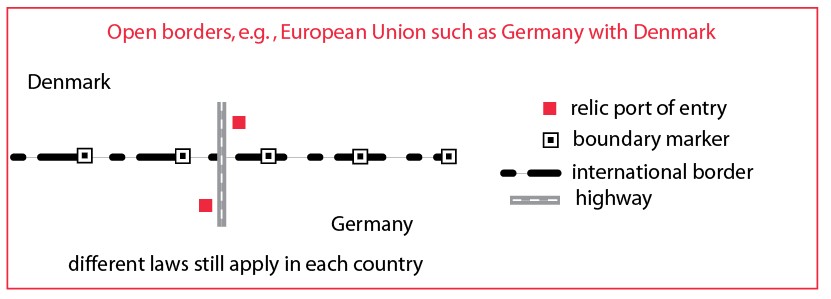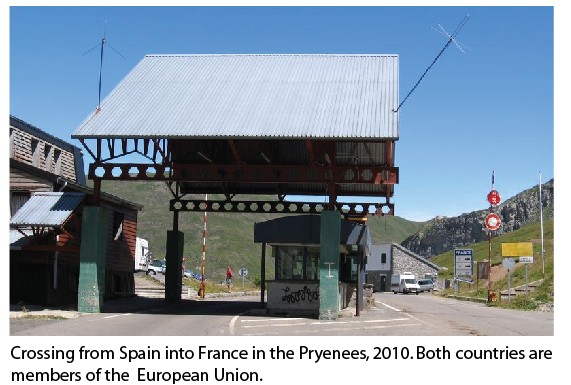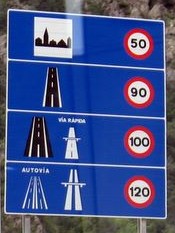Ingolf Vogeler, Types of
International Borders
along the U.S.-Mexico Border
 The
European Union is the best know region of the world where borders are
completely open between countries that signed the Schengen Agreement of
1985: no passports, visas, and border inspections are required any more,
although technically national identity cards are required.
The Schengen rules were absorbed into the
European Union (EU) in
1999.
Twenty-eight
countries, including all European Union (EU) countries (except Ireland
and United Kingdom), and three non-EU members (Iceland, Norway, and
Switzerland) have signed the Schengen Agreement. However, only 15
countries have implemented the common border control and visa provisions
(see map).
Over 400 million people
are now affected. With
heighten security concerns and terrorist threats in Western Europe, the
newest members of the EU might have to wait away before being allowed to
eventually join the Schengen area (Schengen Visa Service,
http://www.schengenvisa.cc, accessed 4 October 2010).
The
European Union is the best know region of the world where borders are
completely open between countries that signed the Schengen Agreement of
1985: no passports, visas, and border inspections are required any more,
although technically national identity cards are required.
The Schengen rules were absorbed into the
European Union (EU) in
1999.
Twenty-eight
countries, including all European Union (EU) countries (except Ireland
and United Kingdom), and three non-EU members (Iceland, Norway, and
Switzerland) have signed the Schengen Agreement. However, only 15
countries have implemented the common border control and visa provisions
(see map).
Over 400 million people
are now affected. With
heighten security concerns and terrorist threats in Western Europe, the
newest members of the EU might have to wait away before being allowed to
eventually join the Schengen area (Schengen Visa Service,
http://www.schengenvisa.cc, accessed 4 October 2010).




Although the open borders of Western Europe are rather uncommon officially today, most international borders today are, nevertheless, effectively open for the movement of people and goods, if technically illegal. The length, irregularity, and location in difficult physical environments makes international borders expensive to patrol and nearly impossible to seal, even when there is a will to do so.